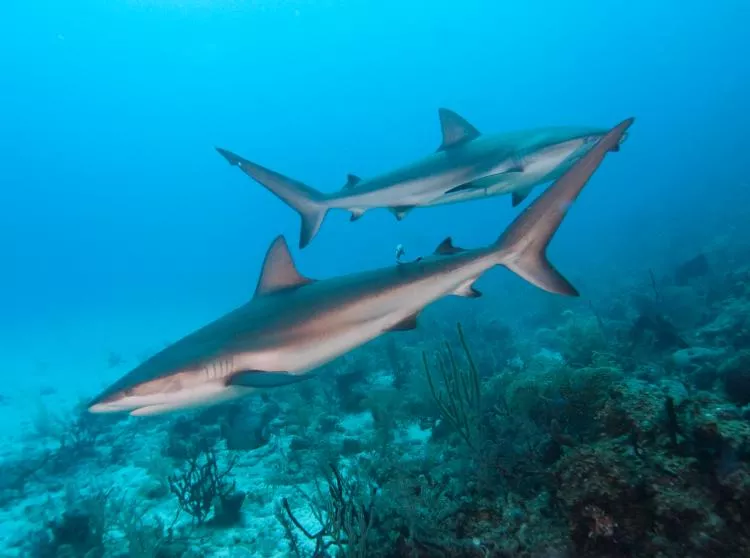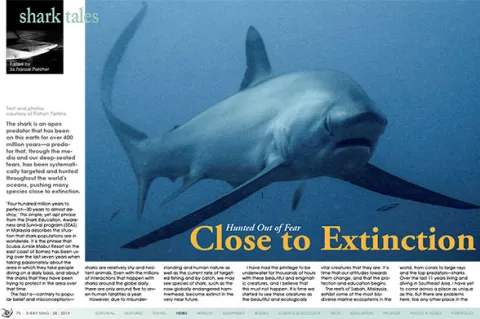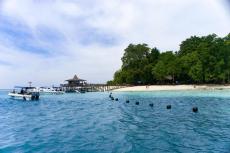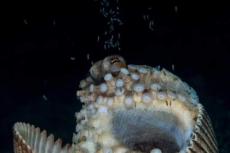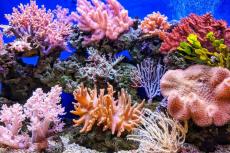The shark is an apex predator that has been on this earth for over 400 million years—a predator that, through the media and our deep-seated fears, has been systematically targeted and hunted throughout the world's oceans, pushing many species close to extinction.
"Four hundred million years to perfect—30 years to almost destroy." This simple, yet apt phrase from the Shark Education, Awareness and Survival program (SEAS) in Malaysia describes the situation that shark populations are in worldwide.
Contributed by
It is the phrase that Scuba Junkie Mabul Resort on the east coast of Borneo has been using over the last seven years when talking passionately about the area in which they take people diving on a daily basis, and about the sharks that they have been trying to protect in the area over that time.
The fact is—contrary to popular belief and misconceptions— sharks are relatively shy and hesitant animals. Even with the millions of interactions that happen with sharks around the globe daily, there are only around five to seven human fatalities a year.
However, due to misunderstanding and human nature as well as the current rate of targeted fishing and by catch, we may see species of shark, such as the now globally endangered hammerhead, become extinct in the very near future.
I have had the privilege to be underwater for thousands of hours with these beautiful and enigmatic creatures, and I believe that this must not happen. It is time we started to see these creatures as the beautiful and ecologically vital creatures that they are. It is time that our attitudes towards them change, and that the protection and education begins.
The reefs of Sabah, Malaysia, exhibit some of the most bio-diverse marine ecosystems in the world, from corals to large rays and the top predators—sharks. Over the last 11 years living and diving in Southeast Asia, I have yet to come across a place as unique as this. But there are problems here, like any other place in the world. We still have many shark species here, including the very rare hammerhead shark, and currently, these species are not protected.
Sharks, which have been part of the ocean’s ecosystems since long before the dinosaurs roamed the Earth, are at risk of extinction because of increased industrial fishing and demand for shark fin soup in the past 30 years. It is estimated that one in five of every shark species is classified as ‘Threatened with Extinction’ by the IUCN—a conservative estimate, as there is insufficient data on almost half of all shark species to determine their population status. With estimates of anywhere from 70 million to 200 million sharks being killed annually, the state of their future is in serious jeopardy.
These statistics are worrying enough when talking about losing entire species, especially those which are a joy to see when diving. But sharks, as apex predators, are key to regulating the ocean ecosystem. They maintain a balance in populations of prey species by removing diseased or old animals. Remove the shark, and the health of the ecosystem suffers. Disrupt ecosystems, and the health of the ocean as a whole suffers.
The scale of the problem can be daunting. It is a global problem, and it is at a critical stage. Action is needed now, not just at the international and governmental level, but also at a local and grassroots level. Areas of ocean known for their shark populations and marine biodiversity become even more important in circumstances such as these. This is what has inspired us to take action to protect the sharks and rays of Sabah, Malaysia.
The importance of Sabah
The waters of Sabah lie within the coral triangle—a roughly triangular area of the tropical marine waters of Indonesia, Malaysia and Papua New Guinea—that is recognized as a centre of high marine biodiversity. The iconic Sipadan Island—one of the top diving destinations in the world, which was made famous by Jacques Cousteau—lies within Sabah waters.
The area is vitally important for marine conservation in general, with Sipadan itself being a prime example of what can be achieved with appropriate action by authorities. The intercession of the Malaysian government in 2005 to declare Palau Sipadan a Marine Protected Park brought together marine conservation and recreational diving in an effort that drastically reduced the negative human impacts on the island and preserved this island ‘jewel’ for future generations. Such protection being extended to a wider area of the Sabah region would bring untold benefits, especially for shark conservation.
There are around 63 species of shark and 68 species of ray currently confirmed in Malaysian waters—including rare species such as hammerheads, eagle rays, devil rays and manta rays. Populations and sightings of whitetip reef sharks, grey reef sharks, whale sharks, blacktip reef sharks and silvertip sharks are common.
We still have these species here, unlike many other places I have dived in Southeast Asia, where most of the large fish species have simply been wiped out. If we protect them, we will not only protect the species and health of this marine environment, but we will also save a significant long-term economical resource, which will disappear if the area is allowed to be indiscriminately fished. Ironically, if that happens, it will take the increasing, sustainable tourism industry with it, so it will become a ‘lose-lose’ situation.
We are lucky to see some very rare species in the Semporna region. Recently, schooling devil rays have been seen at Si Amil, numbering well over 100. Both great and scalloped hammerheads are sighted at Sipadan. Populations of hammerheads have crashed by up to 89 percent in some areas—making those sightings crucially important for species recovery. A personal incentive for getting shark conservation really moving in this area was guiding at Sipadan and seeing hammerheads there.
There is nothing quite like spotting what you know is an endangered animal, showing it to your divers and seeing their reaction. I have seen both scalloped and great hammerheads at Sipadan, but the joy of seeing them turns (...)

